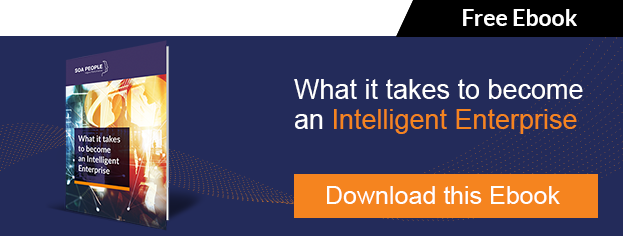Although your ERP is recognised as the core integrated management piece of your main business processes, many other interfaces are almost always needed to help your business run. These could include anything from supplier portals, customer web shops, to office tools like Excel, credit agencies, government sites and so on.
Getting tasks to communicate with each other from application to application can be achieved through interfacing and scripting or coding. There are several ways of doing this, some of which have been around for years and are no longer considered best practice, and others that are new and evolving technologies. An example is VBA, the Microsoft scripting language found in Excel, PowerPoint and other office products. But it can’t work across other non-MS applications.
RPA (Robotic Process Automation) is a relatively new option which is far more accessible and generic, works across non-SAP systems and applications, and doesn’t always need expert programming skills. It’s where robots mimic human users for manual process tasks on user interfaces to automate execution. It brings speed, efficiency and frees up human workers from repetitive tasks for more time availability towards high-value tasks.
Deciding when to automate tasks
Typically, if your task is high volume or needs to be a controlled process, then task automation can take it over. RPA handles increasingly complex scenarios and calculating the ROI is relatively simple and transparent, adding the development cost and the transaction cost.
Task automation and interfacing with SAP
When it comes to task automation, SAP’s strategy is focused on its Cloud Platform Integration Suite (CPI). Its Process Orchestration and Process Integration products are already mature, with customers benefitting from them for years, and maintenance will continue for the on-premise version aligned with SAP NetWeaver 7.5 for the next few years.
Although RPA is not a brand-new concept, iRPA is newer and goes further by combining technologies to create an overall solution, most commonly with conversational AI (chatbots) and Machine Learning, but also with other business tools and workflows.
SAP’s approach is that RPA is not stand-alone, but an integral part of the SAP Intelligent Business Process Management Platform. Where RPA is ideal for repetitive manual tasks, iRPA comes into its own when you need to touch multiple systems, such as Microsoft applications and websites, or when you have no native integration.
A good example of this is in Customer Service, where iRPA can help drive self-service automation, increasing customer satisfaction by optimising and speeding up processes as well as reducing errors.
SAP iRPA will enhance the performance and productivity of your business
The SAP Intelligent RPA Suite is an end-to-end cloud solution of automation tools. As an SAP-acquisition, this is already a proven solution that has been working for customers across all kinds of technologies, not just SAP, for many years.
It stems from the build in the Desktop Studio Development, to the Cloud Factory orchestration and monitoring through to the Desktop Agent that will run the bots, whether from the user’s PC or from a server. From there, it runs any SAP applications, such as SAP SuccessFactors, SAP Ariba and so on, as well as non-SAP technologies such as third-party tools, internet portals and legacy applications.
Manual and high-volume repetitive tasks will continue to exist, but we can work collaboratively to solve your challenges and together find opportunities to solve them with the latest SAP technology, future-proofing your SAP core to ensure your technology stays relevant.
Contact us to find out how iRPA and the SAP Intelligent Business Process Management Platform could enhance the performance and productivity of your business.



